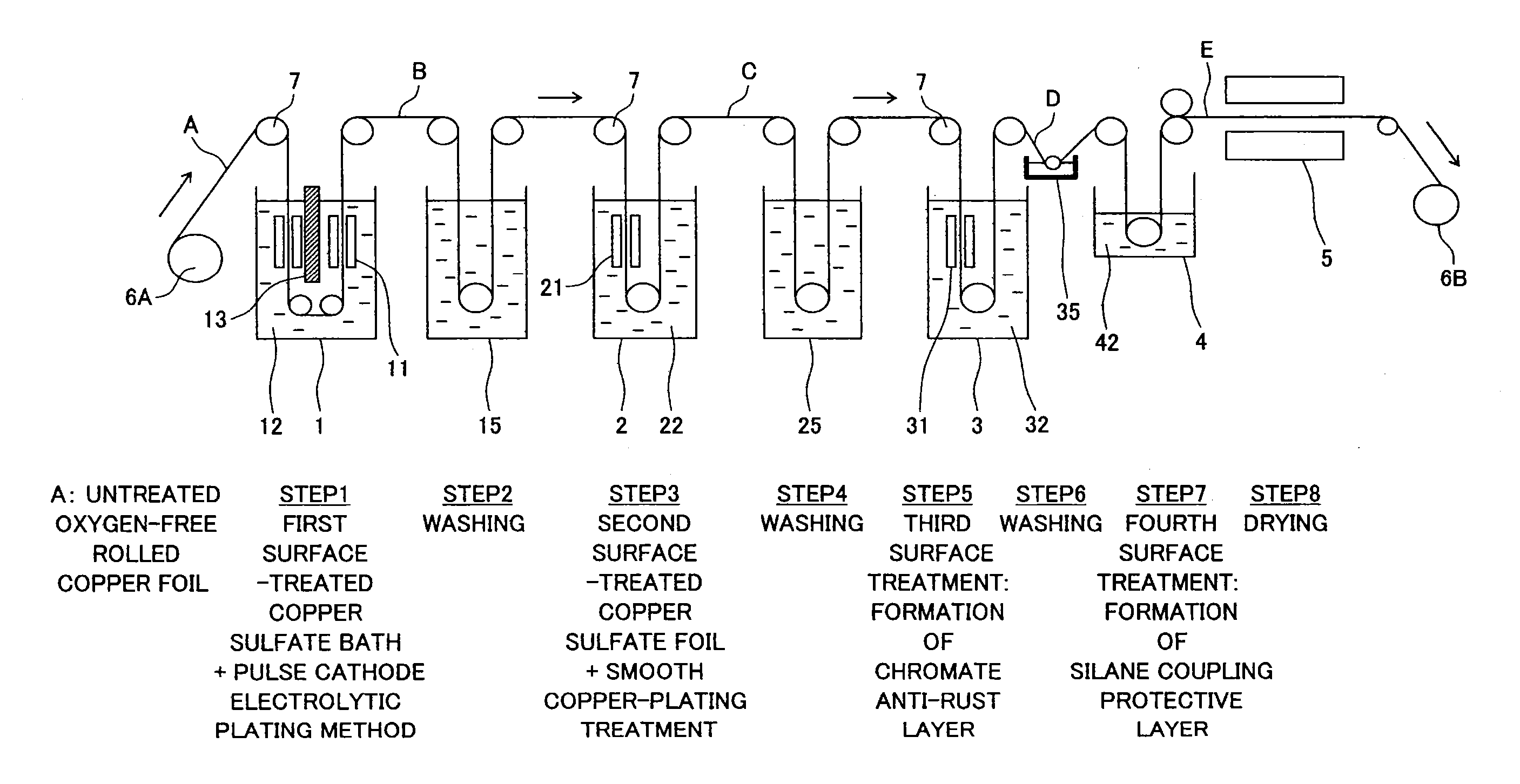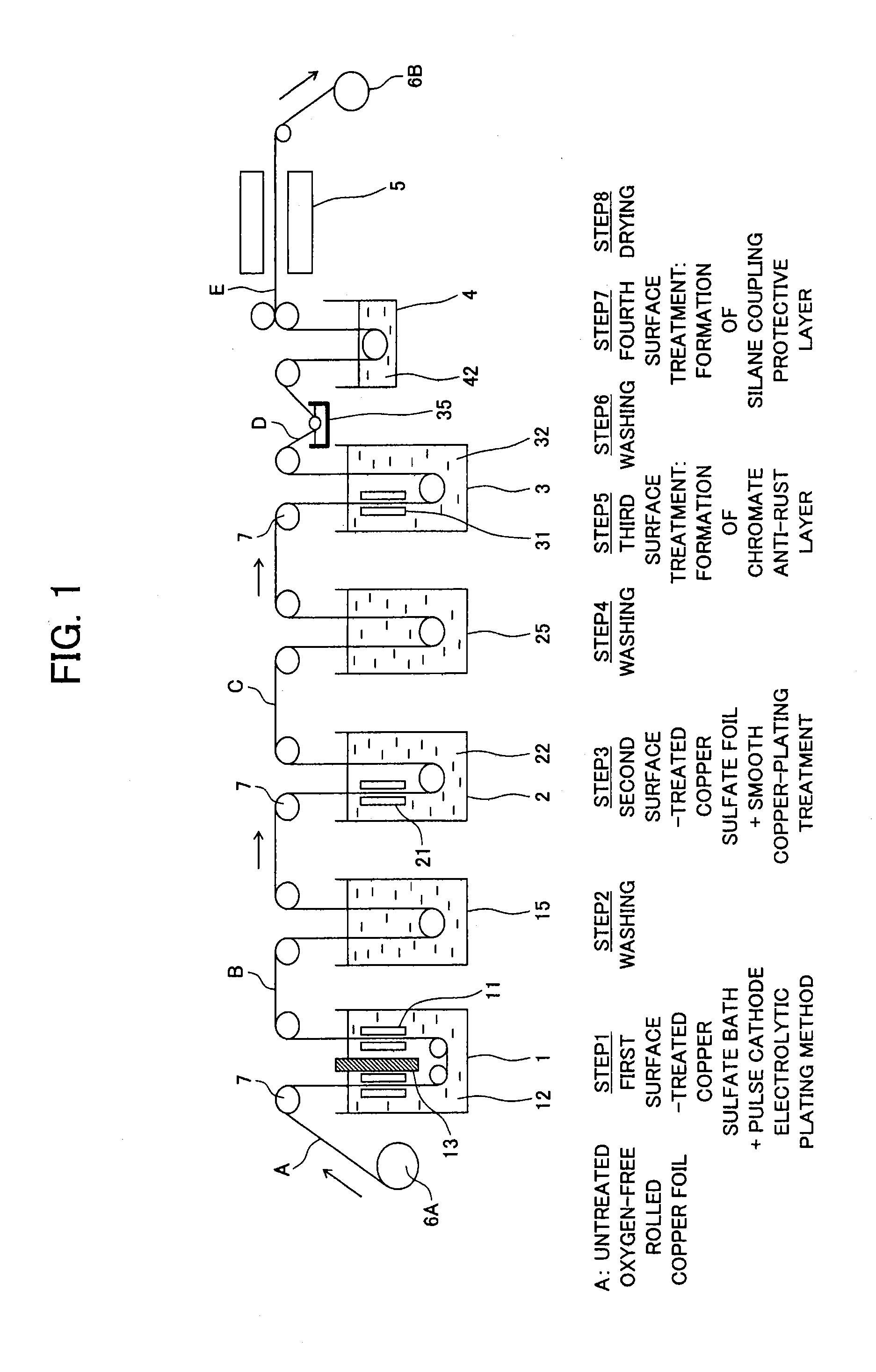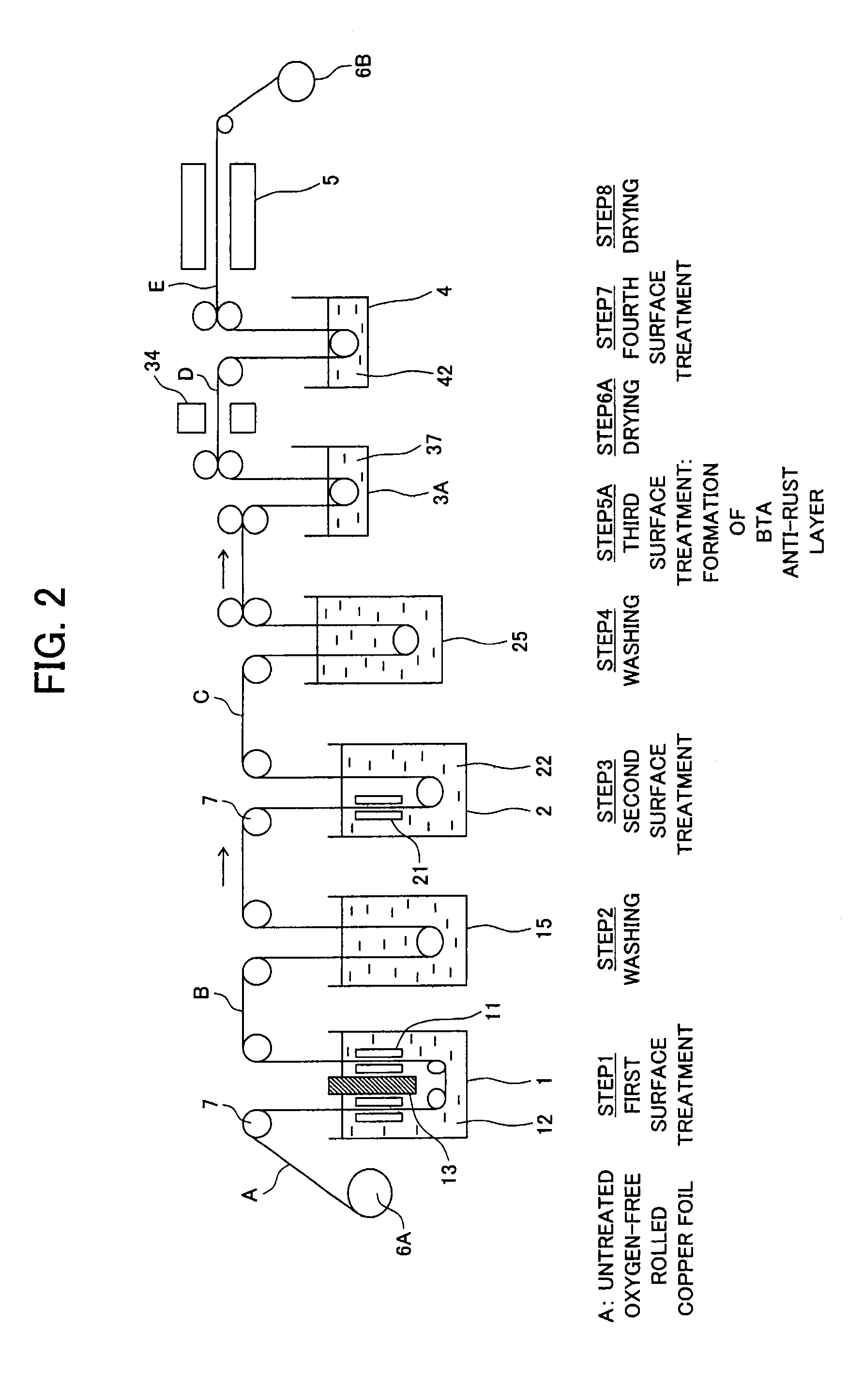Surface treatment method for copper foil, surface-treated copper foil, and copper foil for negative electrode collector of lithium ion secondary battery
a lithium ion secondary battery and surface treatment technology, applied in the direction of metallic material coating process, cell components, coatings, etc., can solve the problems of enlargement of the dimensions of the battery, difficult to coat carbon on the two surfaces of the copper foil, and insatiable applications which require a large number of charge and discharge cycles, etc., to achieve the effect of improving the electrical conductivity, and improving the surface treatment
- Summary
- Abstract
- Description
- Claims
- Application Information
AI Technical Summary
Benefits of technology
Problems solved by technology
Method used
Image
Examples
first embodiment
[0040]A surface treatment method of a copper foil and a surface-treated copper foil of a first embodiment of the present invention will be explained.
[0041]Base Material
[0042]In the first embodiment of the present invention, as a base material which is to be surface treated, there is used a rolled copper foil made of copper not containing oxygen (oxygen-free copper) which is not surface treated (hereinafter, referred to as “untreated”) (hereinafter, referred to as “untreated oxygen-free rolled copper foil”).
[0043]When using the rolled copper foil made of oxygen-free copper, the ingot to be rolled to the copper foil will not contain impurities and the properties of the copper foil will not change. In particular, there is no apprehension of brittleness.
[0044]As a method of roughening the surface of the base material for use in, for example, a negative electrode collector of a lithium ion secondary battery, in order to raise adhesion with the silicon-based active material and improve bo...
example 1
[0144]As the base material, the untreated rolled copper foil A made of an oxygen-free rolled copper A and having a thickness of 0.018 mm which has a surface roughness of 0.8 μm in terms of the surface roughness Rz defined in JIS-B-0601 and has an elongation rate at ordinary temperature (for example 25° C.) of 6.2% was used. The two surfaces of this copper foil were roughened under the following conditions.
[0145]This roughening was divided into, separated by the shield plate 13, treatment which roughens the front surface of the copper foil from the inlet of the first roughening tank 1 to the bottom side and roughening treatment for the back surface of the copper foil from the bottom to the outlet side of the tank. For the current which is supplied to the power supply contact roll 7 and iridium oxide anodes 11, the on-time was set to 10 ms and the off-time to 60 ms (sum of ratios of the on-time and off-time is 7. The copper foil A was made to move by the speed of conveyance explained ...
example 2
[0162]In Example 2, as the base material, there was used copper foil comprised of untreated rolled copper foil made of oxygen-free copper and having a thickness of 0.018 mm with a surface roughness of the two surfaces of the copper foil of 2.5 μm in terms of the surface roughness Rz defined in JIS-B-0601 and with an ordinary (atmosphere) temperature elongation rate of 6.2%.
[0163]That is, this differs from Example 1 in the surface roughness of the base material. Otherwise, the roughening was applied under the same conditions as applied in Example 1. The roughening and surface treatment were carried out so that the surface roughness of the second copper-plating layers became 3.0 μm or less in terms of the surface roughness Rz. Similar evaluation and measurement as those in Example 1 were carried out.
[0164]The results are shown in Table 3.
PUM
| Property | Measurement | Unit |
|---|---|---|
| surface roughness | aaaaa | aaaaa |
| elongation rate | aaaaa | aaaaa |
| surface roughness Rz | aaaaa | aaaaa |
Abstract
Description
Claims
Application Information
 Login to View More
Login to View More - R&D
- Intellectual Property
- Life Sciences
- Materials
- Tech Scout
- Unparalleled Data Quality
- Higher Quality Content
- 60% Fewer Hallucinations
Browse by: Latest US Patents, China's latest patents, Technical Efficacy Thesaurus, Application Domain, Technology Topic, Popular Technical Reports.
© 2025 PatSnap. All rights reserved.Legal|Privacy policy|Modern Slavery Act Transparency Statement|Sitemap|About US| Contact US: help@patsnap.com



